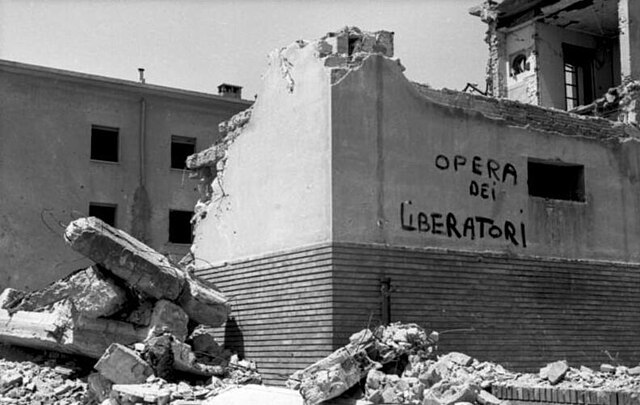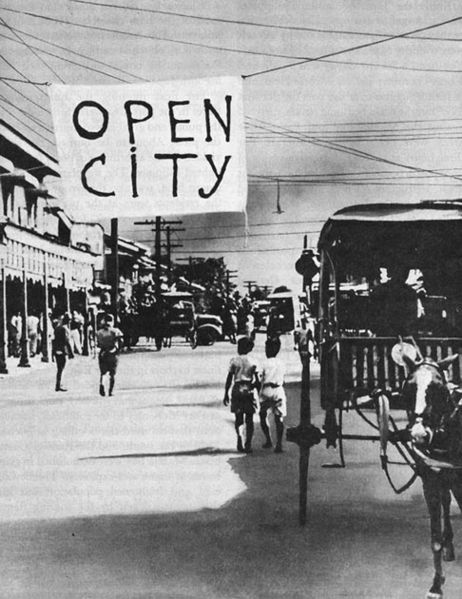Bombing of Rome in World War II
Rome was bombed several times during 1943 and 1944, primarily by Allied and to a smaller degree by Axis aircraft, before the city was liberated by the Allies on June 4, 1944. Pope Pius XII was initially unsuccessful in attempting to have Rome declared an open city, through negotiations with U.S. President Franklin D. Roosevelt via Archbishop Francis Spellman. Rome was eventually declared an open city on August 14, 1943 by the defending Italian forces.
Propaganda inscription on the wall of a bombed building translated as "Work of the Liberators" Rome, 1944
Effects of shrapnel on a wall of the Vatican City railway station, which is adorned with a sculpture of Elijah in his fiery chariot
In war, an open city is a settlement which has announced it has abandoned all defensive efforts, generally in the event of the imminent capture of the city to avoid destruction. Once a city has declared itself open, the opposing military will be expected under international law to peacefully occupy the city rather than destroy it. According to the Protocol I of the Geneva Conventions, it is forbidden for the attacking party to "attack, by any means whatsoever, non-defended localities". The intent is to protect the city's civilians and cultural landmarks from a battle which may be futile.
Manila was declared an open city in December 1941 to avoid its destruction as Imperial Japan invaded the Commonwealth of the Philippines



